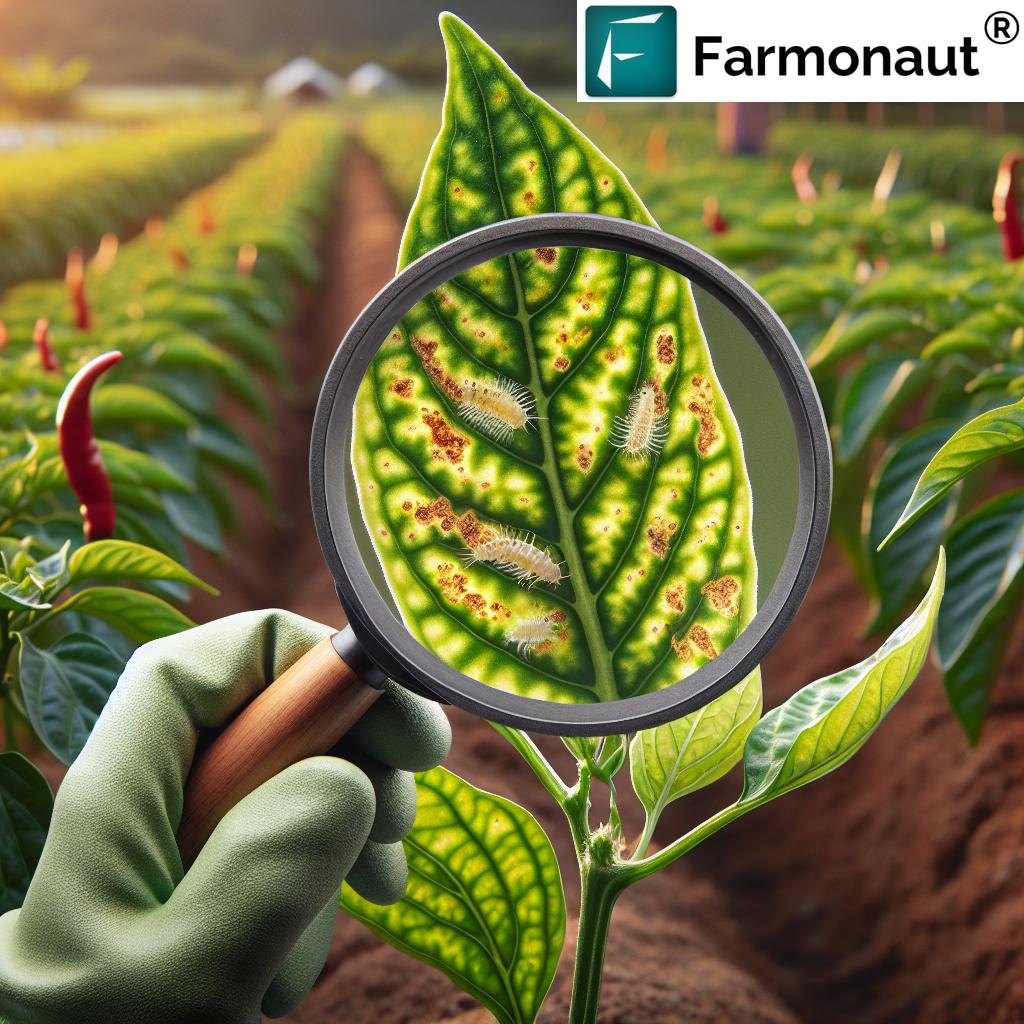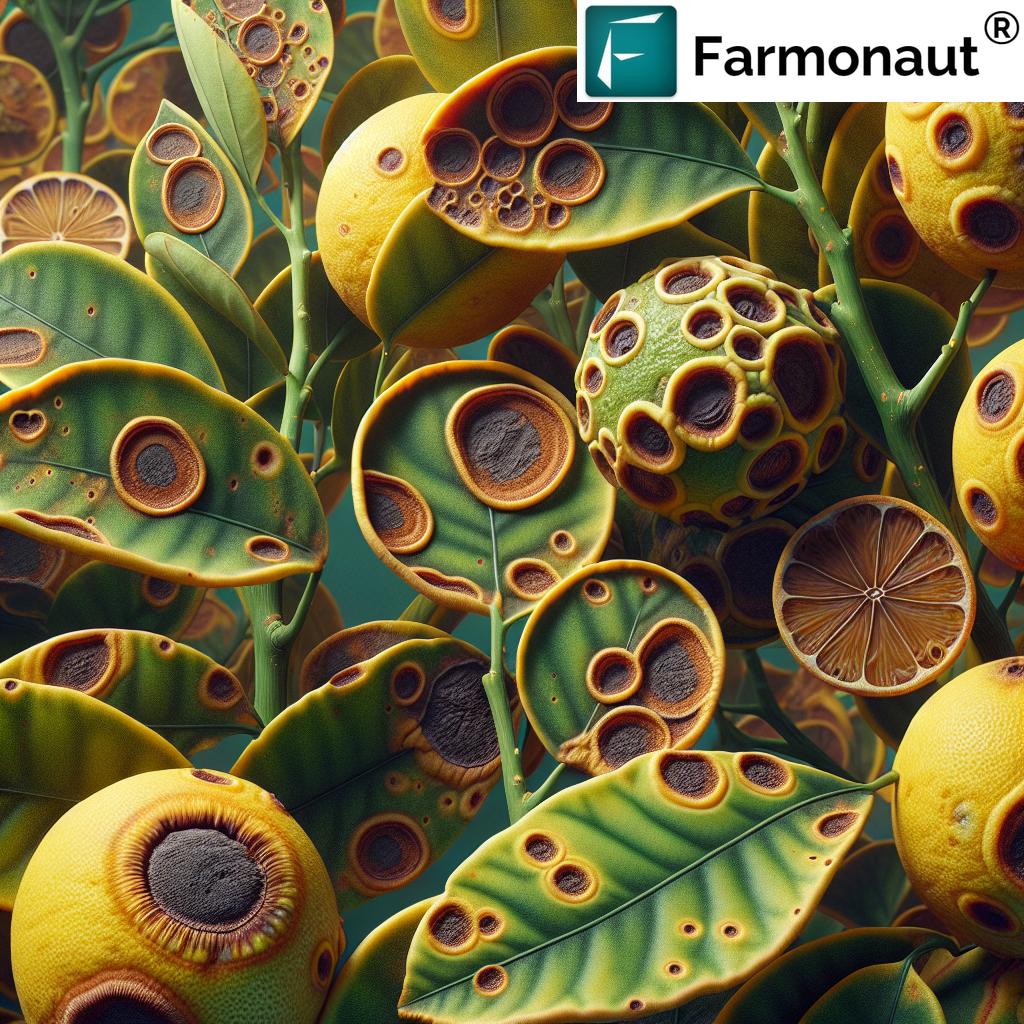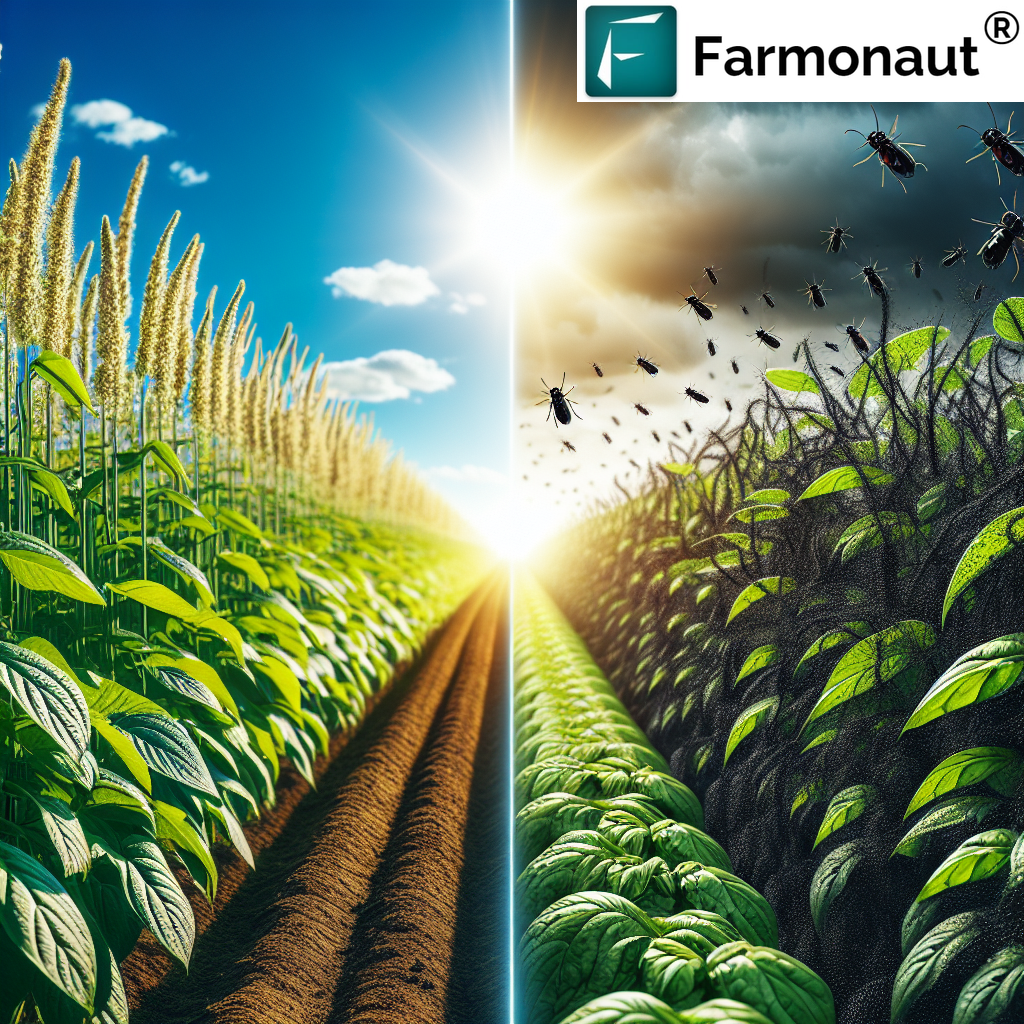Espalier Fruit Trees: Disease Control & Insecticide Guide (2026)
Table of Contents
- Introduction: Focus on Espalier Fruit Trees
- Espalier Fruit Trees: Modern Prospects for 2026
- Understanding Espalier and Its Benefits
- Managing Diseases in Espalier Fruit Trees
- Comparative Table: Espalier Fruit Tree Disease Control
- Bare Root Fruit Trees & Espalier Establishment
- Integrating Pest Management in Espalier Systems
- Orchard Sustainability & Precision: 2026 Solutions
- Farmonaut: Digital Tools for Modern Orchards
- FAQ – Espalier Fruit Tree Management
- Conclusion: Embracing Espalier for Sustainable Orchards
“Espalier fruit trees can improve orchard disease control by up to 30% compared to traditional tree planting methods.”
Introduction: Focus on Espalier Fruit Trees
In the evolving world of horticulture and modern agriculture, the espalier technique has gained renewed significance—especially for those seeking sustainable orchard management strategies in 2026 and beyond. Espalier fruit trees, particularly espalier apple trees, offer more than just a visually appealing structure; they provide practical solutions for managing disease, pests, and land optimization—all while supporting eco-friendly fruit production.
This comprehensive guide explains the disease management and insecticide application relevant to espalier systems, showcasing how bare root fruit trees and precision chemical application are powering orchard efficiency. We’ll also highlight digital support tools, such as Farmonaut’s satellite-powered platforms, designed to assist in proactive orchard monitoring.
Espalier Fruit Trees: Modern Prospects for 2026
In the contemporary agricultural landscape, espalier fruit trees represent a fusion of tradition and technology. The ancient method of pruning and training trees on a two-dimensional plane is evolving with high-density, sustainable farming in mind. Particularly for apple production, compact designs using espalier allow growers to increase productivity per unit area—a crucial consideration as sustainable practices become mainstream agricultural objectives in 2026.
Key Focus Keyword Example: Espalier fruit trees enable higher planting density and more efficient use of orchard space, aligning with the need for sustainable management and resource optimization.
Why Is Espalier Gaining Momentum?
- Efficient Land Use: Higher planting density—espalier systems permit more trees per hectare, maximizing area without compromising health or fruit quality.
- Improved Management: Espalier trees facilitate easier monitoring, reducing labor and costs for pruning, chemical spraying, and harvesting.
- Sustainability Emphasis: Reduced chemical use and water savings—especially via bare root fruit trees—make espalier a top choice for sustainable farming in 2026.
- Technological Integration: Tools like Farmonaut provide satellite-driven orchard insights, real-time crop health monitoring, and resource management at scale for espalier systems. Explore our carbon footprint monitoring for orchard sustainability tracking.
Understanding Espalier and Its Benefits
Espalier refers to the ancient horticultural practice of training fruit trees—notably apples—along trellises, fences, or walls into flat, two-dimensional shapes. Originally intended for both aesthetics and efficiency, this practice now meets the demands of modern sustainable orchard management systems as we move into 2026 and beyond.
Core Benefits of Espalier Fruit Trees
- Space Optimization: Grown along supports, espalier trees enable dense planting in small or irregular spaces.
- Maximized Sunlight Exposure: Flat espalier structures ensure every branch and fruit receives optimal sunlight for even ripening and healthy growth.
- Improved Airflow and Disease Reduction: Training trees on a vertical plane improves air circulation, reduces humidity around foliage, and minimizes risk of fungal diseases such as powdery mildew and apple scab.
- Ease of Maintenance: Open, accessible branches allow for easier and safer pruning, spraying, and harvesting. This reduces the risk of injury and labor costs.
- Precision Management: Trees can be closely monitored for pest and disease management, ensuring timely and targeted interventions.
- Sustainable Practices: Less ground area used means more efficient land allocation, especially valuable in agroforestry or mixed-use farmland.
How Espalier Aligns with Modern Orchard Objectives
Incorporating espalier techniques supports sustainable agriculture and makes high-density planting possible without compromising tree health or fruit quality. As the global push for sustainable food systems and improved environmental practices increases in 2026, espalier’s role continues to expand.
- Ideal for Small-Scale and Urban Orchards: Espalier is especially beneficial in regions where space is at a premium, such as urban gardens and compact farms.
- Enhanced Accessibility: Flat growth facilitates all important orchard activities.
- Environmental Stewardship: Reducing chemical use and maximizing land efficiency aids sustainable management goals.
Managing Diseases in Espalier Fruit Trees
One of the principal challenges in modern fruit tree cultivation is managing the wide range of diseases in fruit trees that can significantly reduce yields and orchard sustainability. The very structure of espalier systems provides unique advantages for disease management in 2026:
- Earlier Detection: Easier visual inspection helps growers quickly spot symptoms such as apple scab, powdery mildew, fire blight, and cedar apple rust.
- Targeted Treatment: Flat, organized branching enables precise, targeted chemical application and reduces unnecessary use of fruit tree insecticides and fungicides.
- Better Air Circulation: Maintains lower humidity levels around foliage, helping to reduce the incidence of fungal diseases.
Integrated Disease Management Approach
Effective management of diseases in fruit trees within espalier systems involves a blend of cultural practices, resistant varieties/rootstocks, and precision chemical controls. The focus is on minimizing chemical dependency while maximizing orchard health:
- Cultural Practices: Regular, skillful pruning—especially during dormancy—removes infected wood, improves airflow, and helps maintain optimal branch spacing.
- Resistant Varieties & Rootstocks: Selecting apple cultivars and rootstocks with built-in resistance to common orchard diseases can significantly reduce the need for chemical controls.
- Chemical Control: The shift to precision, targeted application (through modern sprayers, drones, or spot-spraying tools) is central to minimizing the volume of fruit tree insecticides and fungicides—aligning with sustainable management protocols in 2026.
Essential Focus: Examples of Diseases in Espalier Fruit Trees
- Apple Scab: Most prevalent in humid environments; easily spread via splashing water.
- Fire Blight: Bacterial, can devastate branches quickly.
- Powdery Mildew: Thrives in low airflow and shaded branches—minimized by espalier’s open form.
- Cedar Apple Rust: Requires two hosts, often managed with resistant varieties.
“Bare root fruit trees reduce water usage by approximately 20% in sustainable orchard management practices.”
Comparative Table: Espalier Fruit Tree Disease Control
The table below compares some of the most common diseases in espalier fruit trees, their estimated annual incidence, recommended eco-friendly control methods, and their environmental impact ratings for modern orchards.
| Disease Name | Annual Incidence (Espalier vs. Traditional) % | Eco-Friendly Control Methods | Suitable Organic Remedies (Fruit Tree Insecticides) |
Environmental Impact Rating (1–5) |
|---|---|---|---|---|
| Apple Scab | 14% (Espalier) 20% (Traditional) |
Prune during dormancy; weed control; increase airflow; resistant varieties | Sulfur sprays, potassium bicarbonate, neem oil | 2 (Low) |
| Powdery Mildew | 9% (Espalier) 18% (Traditional) |
Reduced humidity via open structure, remove infected shoots, balanced nutrition | Sulfur, horticultural oil, milk spray | 2 (Low) |
| Fire Blight | 3% (Espalier) 6% (Traditional) |
Sanitary pruning, copper spray, avoid excess nitrogen | Copper-based sprays, Streptomyces-based biofungicides | 3 (Moderate) |
| Cedar Apple Rust | 2% (Espalier) 5% (Traditional) |
Remove alternate hosts, opt for resistant species, regular monitoring | Sulfur, biofungicides | 1 (Very Low) |
| Aphids & Scale Insects | 13% (Espalier) 22% (Traditional) |
Release beneficial insects (ladybugs, lacewings), soap sprays, maintain tree vigor | Neem oil, insecticidal soap | 2 (Low) |
Bare Root Fruit Trees & Espalier Establishment
Bare root fruit trees—supplied in a dormant state and without soil—are uniquely suitable for modern espalier establishment. Advances in propagation ensure these trees come pre-grafted on dwarf or semi-dwarf rootstocks ideal for training.
- Cost Savings: Bare root purchases are less expensive, more efficient to transport, and adapt quickly to new soils.
- Water Conservation: Research shows that bare root planting reduces water usage by at least 20%, making it a top consideration in sustainable orchard management approaches as we enter 2026 and beyond.
- Rapid Establishment: Dormant trees acclimate faster, especially when roots are soaked pre-planting.
Key steps for successful espalier orchard establishment with bare root fruit trees:
-
Planning and Site Preparation:
- Choose a sunny, well-drained location.
- Test soil pH and fertility levels; adjust as needed to suit the species being planted (apple, pear, etc.)
-
Planting:
- Plant during tree dormancy—typically late winter to early spring, just before buds swell.
- Soak roots for several hours before planting.
- Position so that graft unions remain above soil level for disease prevention and proper growth.
-
Training & Initial Pruning:
- After planting, cut back the main leader to the desired height to stimulate branching.
- Tie shoots along the support structure (trellises, fences, or walls) to begin the espalier’s chosen form (cordon, palmette, fan, etc.).
- Early formative pruning dictates long-term branch structure and yields.
Ongoing Pruning and Training
Espalier management requires consistent, careful pruning to balance growth and fruit production. This ensures every part of the tree receives optimal sunlight and air.
- Regularly remove crossing, crowded, or non-productive branches to maintain structure.
- Trim back growth to the preferred style to support productivity and ease of care.
- Continue training new shoots along wires or supports as the tree grows.
Integrating Pest Management in Espalier Systems
Pest control is essential for healthy, high-yielding espalier fruit trees. Pest and disease management in these systems naturally aligns with sustainability objectives by reducing total chemical use while increasing the effectiveness of applications.
Best Practices for Pest and Disease Management in Espalier Fruit Trees
-
Continuous Monitoring:
- Flat structure of espalier trees means every branch is visible for quick assessment of insect or disease outbreaks.
- Combine visual checks with remote field monitoring platforms to catch issues early.
-
Targeted Application of Fruit Tree Insecticide:
- Precision sprayers or spot treatments on affected branches help reduce overall pesticide input.
-
Biological Controls:
- Introducing beneficial insects such as ladybugs (for aphid control) and predatory mites (for scale) reduces reliance on broad-spectrum chemicals.
-
Cultural Controls:
- Practicing sanitation (removing infected wood during dormancy), optimizing tree health, and eliminating disease and pest reservoirs (old fruit, leaves, and weeds) supports a healthy agroecosystem.
Integrated Pest Management (IPM) in espalier orchards in 2026 incorporates real-time monitoring (such as that provided by Farmonaut) for dynamic responses and sustainable outcomes. Check our large scale farm management solution for comprehensive monitoring support!
Eco-Friendly Insecticide Options for Espalier Fruit Trees
- Neem Oil: Broad-spectrum, organic solution suitable for most soft-bodied orchard pests. Minimal environmental impact.
- Insecticidal Soap: Low toxicity option, especially effective against aphids and scale insects commonly found in espalier systems.
- Horticultural Oils: Used in early spring to disrupt pest lifecycles without harming beneficials.
- Sulfur or Copper-Based Sprays: Used for fungal and certain bacterial diseases, these also have low impact ratings when applied in moderation.
By ensuring all treatments are targeted and only applied when pest pressure is proven—using precision monitoring—growers can maintain orchard resilience and fruit quality without compromising the ecosystem.
Want to integrate satellite-powered field scouting and digital record-keeping? Visit our Farmonaut Crop Plantation Advisory for seamless, tech-enabled orchard solutions.
Orchard Sustainability & Precision: 2026 Solutions
Harnessing Modern Tools & Technologies
In the era of precision agriculture, sustainable orchard management hinges on timely, accurate information and smart application of resources. Farmonaut, as a satellite technology leader, is dedicated to making such insights accessible.
- Satellite-Based Monitoring: High-resolution, real-time crop health and soil condition monitoring empowers better field decisions for espalier trees.
-
AI-Driven Disease & Pest Alerts: Our Jeevn AI Advisory system delivers early warnings and customized advisory for orchard health.
Try our Fleet Management solution to optimize labor and mechanization across orchards—large and small! - Blockchain Traceability: Users can access transparent product tracing for sustainable practices, from field to fork.
Chemical Application: Evolving with Espalier
- Precision Spraying: Drone and robot sprayers in orchards reduce chemical drift and improve targeted coverage, ideal for espalier’s vertical structure.
- Data-Driven Decisions: Use real-time orchard data (via tools like Farmonaut) to support targeted decisions and reduce input waste.
Bare Root & Espalier: Sustainability in Action
Bare root fruit trees and espalier training offer one of the most water- and resource-efficient approaches, especially when paired with digital orchard management tools. Sustainable orchards can use satellite data to optimize irrigation, refine chemical schedules, and ensure orchard workflows align with labor, quality, and environmental objectives.
Access Farmonaut’s API for advanced orchard data integration: Explore Farmonaut API | API Developer Docs
Farmonaut: Digital Tools for Modern Orchards
As the world increasingly turns to digital agriculture, Farmonaut’s advanced, satellite-based platform empowers orchard managers with the following solutions:
- Remote Sensing: Frequent, cloud-based satellite updates provide high-resolution vegetation health metrics (NDVI), soil moisture tracking, and pest/disease scouting.
- AI Advisory & Environmental Monitoring: Receive tailored orchard advisories and monitor environmental impact—carbon emissions, water use, and more. Check our carbon footprinting tool for orchard impact assessments.
- Blockchain Traceability: Prove sustainable practices and transparency from orchard to market. Read about product traceability.
- Resource Management: Fleet, labor, and supply allocation across large-scale and diversified orchards, powered by geospatial intelligence.
These tools position espalier fruit tree growers for success and sustainability—not just for 2026 but for the future of global fruit production systems.
FAQ – Espalier Fruit Tree Management
What is an espalier fruit tree?
An espalier fruit tree is a tree (most commonly apple or pear) trained to grow flat on a two-dimensional plane—like along a trellis, wall, or fence—for optimal sunlight, space efficiency, and disease and pest management.
How does espalier improve disease control?
Espalier trees’ flat, open structure improves air circulation, reduces humidity around foliage, and allows easy visual inspection—all helping prevent common fungal and bacterial diseases such as scab, powdery mildew, and fire blight.
Are bare root fruit trees better for espalier orchards?
Yes. Bare root fruit trees—dormant and soil-free—are cost-effective, easy to transport, quick to establish, adapt well to espalier training, and reduce water usage by around 20% compared to container-grown trees.
What is the best way to apply fruit tree insecticide in espalier systems?
Use targeted, precision application tools (hand sprayers, smart drones, or robotic spot-spraying) to apply only to infected or at-risk branches. Always integrate IPM practices and use organic, low-impact remedies where possible.
Can analytics and mobile apps help with espalier orchard management?
Absolutely. Farmonaut’s app suite provides orchard NDVI and crop health mapping, pest/disease alerts, weather data, irrigation optimization, and more. It is available for web, Android, and iOS.
Conclusion: Embracing Espalier for Sustainable Orchards
Espalier fruit trees, especially espalier apple trees, stand out as a modern solution for sustainable orchard management in 2026. By maximizing space efficiency, improving disease and pest management, enabling precision spraying, and embracing digital support tools, growers can produce higher quality fruit with lower ecological impact. The continued innovation in satellite crop monitoring, rootstock selection, and biological controls will ensure that espalier systems remain resilient and productive against the evolving challenges of modern agriculture.
Bare root fruit tree establishment, coupled with effective pruning and strategic management, offers a future-proof approach for every orchard size—from intensive commercial blocks to home-scale gardens. By choosing espalier methods, growers take a step toward sustainable yields, reduced input costs, and a more environmentally responsible food system.
The integration of advanced monitoring tools means stakeholders have access to all the resources they need for success—digital precision meets ancient horticultural wisdom, creating a path towards orchard sustainability, resilience, and economic viability for 2026 and the years to come.
Ready to optimize your espalier orchard? Join us at Farmonaut for the data-driven solutions and tools to make your orchard thrive!












